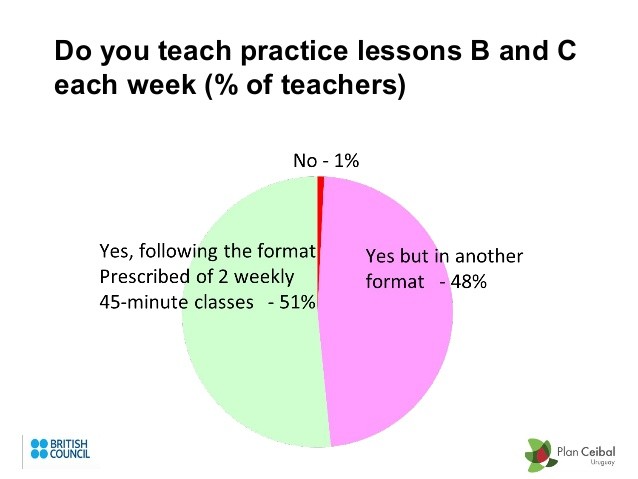How do you evaluate a plan like Ceibal
Post on: 16 Март, 2015 No Comment

28LIRNEnet%29.jpg /%If you have had your fill of theories and promises about what the widespread diffusion of information and communication technologies (ICTs) might mean for teaching and learning practices across an entire education system and want to see what actual practice looks like, a trip to Montevideo (or better yet, one of the regions outside the Uruguayan capital) should be high on your list.
Under Plan Ceibal (earlier blog post here ), Uruguay is the first country in the world to ensure that all primary school students (or at least those in public schools) have their own personal laptop. For free. (The program is being extended to high schools, and, under a different financial scheme, to private schools as well). Ceibal is about more than just ‘free laptops for kids’, however. There is a complementary educational television channel. Schools serve as centers for free community wi-fi, and free connectivity has been introduced in hundreds of municipal centers around the country as well. There are free local training programs for parents and community members on how to use the equipment. Visiting Uruguay last week, I was struck by how many references there were to ‘one laptop per teacher’ (and not just ‘one laptop per child’, which has been the rallying cry for a larger international initiative and movement). Much digital content has been created, and digital learning content is something that is expected to have a much greater prominence within Ceibal now that the technology infrastructure is largely in place.
There has been much hype around large scale deployments of OLPC XO laptops of the sort used in Uruguay in various countries around the world, and assertions of large numbers of units deployed have been bandied about for a few years, but many people have questions about how just how many of these little green machines are actually in the hands of children worldwide. There is no doubt about the numbers (over 380,000) in Uruguay — the laptops are not sitting in boxes under an awning at the Ministry of Education collecting dust. You see them everywhere you see school children.
Notably, and tellingly, Plan Ceibal rolled out first in rural and poor communities, with schools in the capital city of Montevideo reached only in the final stage of deployment. This stands in stark contrast to the way educational technologies make their way into schools and communities pretty much everywhere else in the world, where urban population centers and wealthy communities are typically first in line (and in many places, the line may end with them!). Perhaps this is one reason why there appears to be such a strong political consensus across Uruguay in support of the program.
I have visited schools using educational technologies of various sorts in over 50 countries around the world, but never have I been in schools as saturated with portable computing devices to the extent of what I saw in Uruguay. Individual classrooms: Yes, in Korea, in the United States, in Singapore, in Iceland and in numerous other places. But whole schools, in a country where such schools are the norm. and not special outliers? No (although admittedly I have not been to Maine for awhile). Standing amidst the computer-enabled hubbub of activity that now characterizes the standard learning environments in Uruguayan schools, there can be no denying that something new and different is happening in a big way. Every student in every classroom in every school (and, just as importantly, in every home ) is different by multiple orders of magnitude.
Just what this difference will mean — for young Uruguayans and their families, for teachers and schools and communities, for the country itself — is anyone’s guess at this point. Preliminary results from one study underway shared with a group of international experts who met in Uruguay last week apparently show that, as a result of increased access to technology in the two years since the rollout of Ceibal commenced, eight-year old children now have the same level of computer literacy that 18 year olds demonstrated just a few years ago. (One hopes that this finding will be released, and explained, in the planned upcoming official release of initial evaluation results from Ceibal.) What might the consequences be if young people in Uruguay have what is essentially an ‘extra’ ten years of technology literacy — what might happen during those ten years (and beyond) as a result? No one knows, but it will be quite interesting to watch.
All of this comes with a cost, of course: a steep cost. Is it worth it? And how will we know?
Initial informal results of a first stage of evaluation work around Plan Ceibal were released at an event in Uruguay earlier this week, and a formal publication is expected within the next month or so. (This blog will cover the findings once they have been officially released.) Also this week, the Inter-american Development Bank announced a Support Program for the Consolidation and Expansion of Plan CEIBAL. which notes, among other objectives, that It is therefore an objective of this second stage, the establishment of the institutional framework and Ceibal generation capabilities, tools and methodologies for managing, monitoring and evaluation Ceibal Plan. (You can read the project document here. [pdf])

These evaluations, and other research projects in preparation, will investigate a whole series of potential impacts of this ambitious program and its successor initiatives. What is the most useful frame of reference for assessing the impact of Plan Ceibal in and on Uruguay? Standardized test scores? Something broader? How about its larger societal and community impact? All good and valid questions. In many ways, Ceibal can, and perhaps should, be seen not so much as an education project, but as a larger societal transformation project (of the sort often associated with e-government initiatives), with the education system as the primary and initial dissemination vector.
Daring is the word the Minister of Education used last week in a speech at a UNESCO event to characterize her country’s investment in Plan Ceibal. (The translation in my headset was initially risky, which the interpreter quickly corrected.) Fortes fortuna adiuvat. I learned back in my school days, and it will be exciting to monitor what is happening in Uruguay to see if indeed fortune favors the bold .
For more information:
This is the first in what will be an occasional series of posts about the emerging Uruguayan experience.
Please note: The image used at the top of this blog post comes from A.K. Mahan of LIRNE.NET via Flickr and is used according to the terms of its Creative Commons License (Attribution-Noncommercial 2.0 Generic).














